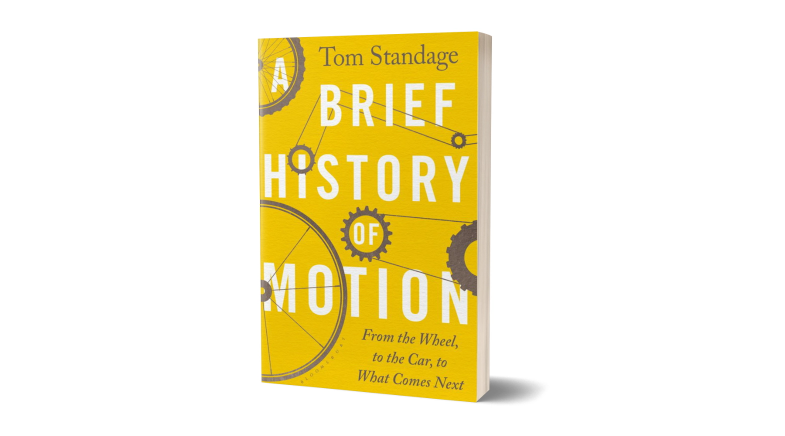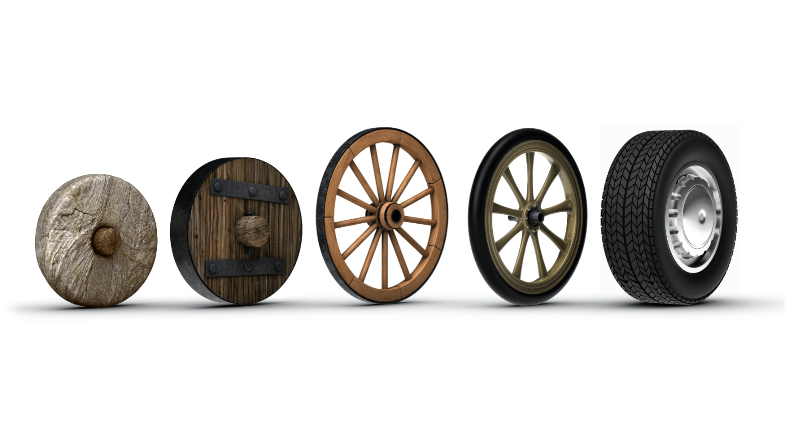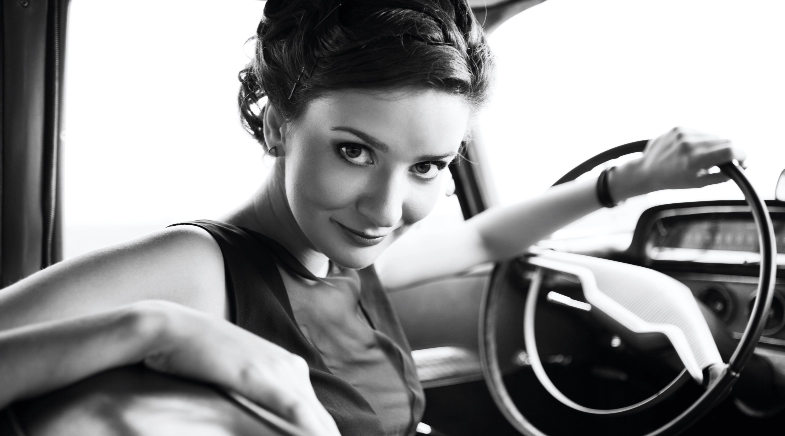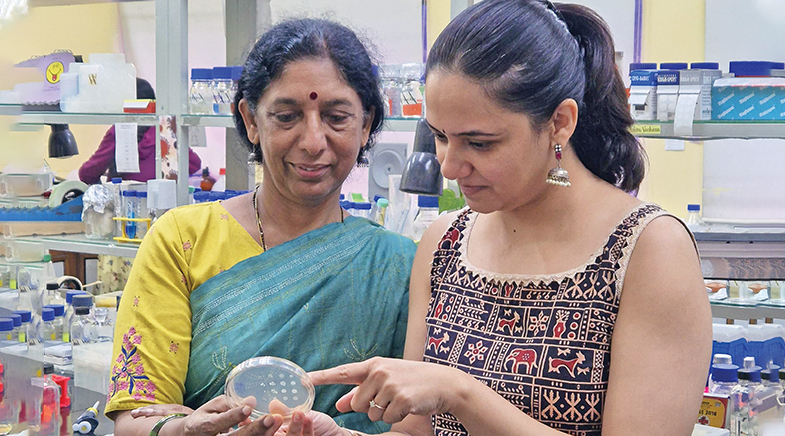Where there's a wheel, there's a way
-
- from Shaastra :: vol 01 edition 03 :: Sep - Oct 2021

A delightful history of mobility vehicles over time, and their profound influence in steering societal and political change.
Back in those days when cable was merely a bulky knitting pattern and surfing was what Archie and his pals did, a friend had found a good way of whiling away time as a schoolboy in Delhi. He would stand on the road outside his house in the early 1960s, counting the number of cars that went by. If he was lucky, he recalls, he would get to see 10 or 12 vehicles in an hour.
Then came the Maruti, and India saw a revolution on the roads, in more ways than one. Any child who may now want to count Delhi's vehicles is asking for trouble. For one, there are few pavements in the city. Two, the fumes are toxic. And, three, you can't keep up with the cars in any case.
Many of the changes that the so-called family car ushered in come up - though in different contexts - in journalist Tom Standage's A Brief History of Motion: From the Wheel to the Car, to What Comes Next. Packed with information and anecdotes, this book by the digital editor at The Economist and editor-in-chief of its website steers us through time and geography to narrate a remarkable story. He tells us how wheels morphed over time, how cars changed landscapes and were an effective tool for feminism and civil liberty and about the future of driverless automobiles. He looks at companies' efforts at luring women customers by marketing cars as fashion items and mentions the impact of the quest for oil on geopolitical equations.
He answers, often with understated humour, questions that we may have on the different modes of transport. Ever wondered, for instance, what pushed horse-led carriages out of England and the United States?
The story of vehicles is not just about evolving modes of transport, but about the socio-economic changes that followed.
It was horse manure.
"By the 1890s around 300,000 horses were working on the streets of London, and more than 150,000 in New York City. Each of these horses produced an average of twenty-two pounds (ten kilograms) of manure a day, plus a quart (about a liter) of urine," he writes. The stench, he adds, was unbearable, and cleaning up was a mammoth task.
If the manure produced by the 15,000 horses in Rochester, New York, was piled up each year, it would cover an acre of ground to a height of 175 feet and breed 16 billion flies, city health officials had estimated. And Rochester, he underlines, was small compared to New York City, which had ten times as many horses.
"To advocates of a newly emerging technology, the solution seemed obvious: get rid of horses and replace them with self-propelling motor vehicles, known at the time as horseless carriages. Today we call them cars," he writes.
And cars, he adds, ushered in unimaginable changes. "Today it is the motor vehicle, rather than the horse, that seems unsustainable."
HISTORY ON WHEELS
The author of such works as A History of the World in Six Glasses and The Victorian Internet delves deep into history to tell us the story of motion. The first wheeled vehicles were possibly hand-pulled Carpathian mine carts - as evidenced by vessels with four wheels from 3500-3000 BCE found on the southern flanks of the copper ore-rich mountains in Central and Eastern Europe. Producing an ingot of the metal entailed processing large amounts of ore, which, he points out, had to be dug out of the mountains by hand. The carts were invented to ease the shifting of heavy loads.
What's significant is that the story of vehicles - from carts and automobiles to bikes and electric cars - is not just about evolving modes of transport. More absorbing still is his account of the socio-economic changes that followed or were prompted by new forms of transport.

The bicycle, for instance, was a great leveller in the late 19th century. "It let people travel as quickly as they could on horseback, but without the expense of buying, feeding, and maintaining a horse," Standage writes. The American monthly The Century Magazine said it enabled the poor man to "sing the song of the open road" as freely as the millionaire.
PEDAL POWER
Not surprisingly, bicycles emerged not just as a cheaper alternative for the people, but also as a liberating tool for women. "This was not simply because women cyclists challenged the impracticality of Victorian clothing and took to wearing trousers or bloomers instead. Beloved of suffragettes and socialists, bicycles became more broadly associated with personal emancipation and social progress."
And, if you saw Paul Newman woo his lady love on a cycle in Butch Cassidy and the Sundance Kid, or, nearer home, watched Dev Anand on a bicycle pursue Nutan in Paying Guest, you would know the role the two-wheeler played in promoting romance.
"They broadened people's social circles, letting cyclists travel beyond their own communities and greatly increasing the number of potential marriage partners. Cycling... allowed young men and women to escape the oversight of chaperones. As one newspaper explained in 1899, 'The chief merit of the bicycle in the eyes of the young is that it dispenses with the chaperon... It imparts open air freedom and freshness to a life heretofore cribbed, crabbed, cabined and confined by convention.'"

The impact of automobiles on the right to movement of Black Americans makes for a fascinating read, too. He recounts the story of the jitney - a form of ride-sharing that was popular for a spell in the 20th century. An economic slowdown, which began in 1913, prompted many who had lost their jobs to drive their cars as cabs to earn money. They would ply their vehicles on the main street of a city, ferrying three or four passengers to or from the central business district. There were also all-Black jitney routes, operated by Black drivers for Black riders, in Southern cities.
Then came activist Rosa Parks. On December 1, 1955, she resisted segregation in a bus - Blacks had to sit at the back and give up their seats if a white person was without one - by refusing to vacate her seat. She was arrested, which led to a boycott of buses in Montgomery. African-Americans who owned cars supported the Montgomery Bus Boycott by carrying people who needed to travel for 10 cents - which was the bus fare.
"The boycott was widely observed... as near-empty buses plied the streets. The organizers decided to continue the boycott and established a new body, the Montgomery Improvement Association (MIA), to oversee it. Martin Luther King Jr., a young local minister, was elected as its leader," he writes.
Standage, clearly, has done a thorough study of his subject. The indices point to the large number of books, academic notes, journals, newspapers, civic body notes and political committee minutes that he consulted for this volume.
While it must be a historian's delight, there's a lot for the trivia lover, too. Standage tells traffic light enthusiasts (there has to be a fan club somewhere!) that the first signal was installed on Westminster Bridge in London in 1868. Railway engineer John Peake Knight invented a set of semaphore arms. Placed on a tall post, these arms had to be raised and lowered manually - raised meant vehicles and horses had to stop to allow pedestrians to pass, lowered arms meant vehicles and horses had to exercise caution.
And just what was Detroit police officer William Potts's contribution to traffic lights? In 1917, Potts added an amber light to the traffic pole to warn people that the signal was about to change.
SOCIAL MOBILITY
The book focuses largely on the U.S. and Britain, but much of what he writes brings to mind the far-reaching changes that India has been witnessing over the years. Towns got connected to cities, villages to towns. The Metro in Delhi enabled Muslim women living in the Walled City to come out of their homes, just the way bicycles brought women out in the West.
Then, of course, we have seen highways and expressways trample over villages, pavements and shanties, the rise of pollution and smog, and citizen campaigns for restricting traffic.
Where do we go from here? The COVID-19 pandemic has brought back the past - the magic of empty roads and unpolluted air - and many expect a restriction on traffic and cars in the coming years. Consultancy group KPMG predicts that the pandemic will result in a world of "fewer trips, fewer miles, and fewer cars".
Cars were an effective tool for channelling feminism and civil liberty: companies lured women customers by marketing cars as fashion items.
The future perhaps lies in one's hands - in the smartphone. The movement towards ride-hailing, car-pooling, bike-sharing and other mobility services may lead to the use of a single app for a host of transport options, Standage states.
"This approach, known in the industry as mobility as a service (MaaS), can be seen in action in Helsinki, where trains, trams, buses, bike rental, taxis, e-scooters, and car rental can all be accessed through a single app," he says.
"The smartphone, rather than any particular means of transport, is the true heir to the car," he writes.
It's all about mobility, after all.
Have a
story idea?
Tell us.
Do you have a recent research paper or an idea for a science/technology-themed article that you'd like to tell us about?
GET IN TOUCH














